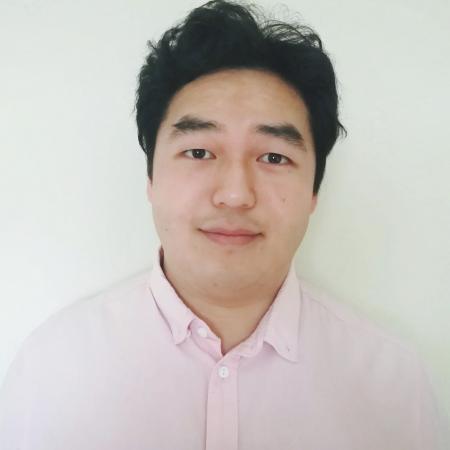
Wilkie Choi
Wilkie Choi
Princeton Plasma Physics Laboratory
Friday, December 11, 2020
3:30pm
Remote
Abstract:
EAST has demonstrated steady-state, fully non-inductive operation by injecting radiofrequency waves (rf) power [1], including a unique setup of two lower hybrid (LH) systems at 2.45 GHz and 4.6 GHz [2]. Theoretical analysis [3] and time-slice simulations [4] predict that injecting the two LH waves simultaneously would produce higher current drive (CD) efficiency than injection of either frequency alone. However, evidence for synergy between the two LH waves has not been observed in the experiments to date. To investigate the optimal conditions for LH synergy, a recent experiment scanned the power fraction from the two antennas while maintaining constant total injected power, for two different density conditions.
The time-dependent evolution of an EAST plasma discharge with simultaneous injection of two frequencies of LH waves has been simulated for the first time using the TRANSP code [5] in combination with a ray-tracing code GENRAY [6] and a 3D Fokker-Planck solver CQL3D [7]. In addition to requiring accurate density and temperature profiles for simulation to emulate experiment, it is also found that at low density the injected power spectrum needs to be modified with a tail model [8, 9] in order to reproduce the observed core deposition.
The time-dependent simulations show that, when scanning the injected power ratio of the two frequencies of LH at low density (ne,lin ≈ 2.0 x 1019 m-3), a shot with simultaneous injection of 0.6 MW at 2.45 GHz and 0.4 MW at 4.6 GHz achieved an LHCD efficiency higher than 1 MW of either 2.45 GHz alone (by ~39%) or 4.6 GHz alone (by ~8%) injected in similar conditions. However, at high density (ne,lin ≈ 3.3 x 1019 m-3), LHCD efficiency was found to monotonically increase with fraction of LH power at 4.6 GHz. The possible operating regimes with synergy and their sensitivity to plasma density and injected wave spectrum will also be investigated, which will further optimization of access to long pulse scenarios at high non-inductive fraction.
References:
1 A.M. Garofalo et al, Nucl. Fusion 57 076037 (2017)
2 M. H. Li et al, Physics of Plasmas 23 102512 (2016)
3 Y. Yang et al, Physics of Plasmas 24 032502 (2017)
4 X. M. Zhai et al, Physics of Plasmas 26 052509 (2019)
5 TRANSP doi: 10.11578/dc.20180627.4
6 A.P. Smirnov and R.W. Harvey, Bull. Amer. Phys. Soc. 40, 11 (1995)
7 R.W. Harvey and M.G. McCoy, Proc. IAEA TCM on Advances in Sim. and Modeling of Thermonuclear Plasmas, pp. 489-526, (1992)
8 Y. Peysson et al, Plasma Phys. Control. Fusion 58 044008 (2016)
9 B.J. Ding et al, Nucl. Fusion 58 095003 (2018)
Bio: Wilkie received his Bachelor’s degree from Queen’s University in Canada, then moved south to pursue his Ph.D. at Columbia University. A portion of that time was spent at DIII-D, where he studied control of locked mode using applied 3D fields for his thesis. He is currently a postdoctoral researcher at PPPL, working with Francesca Poli on time-dependent modeling of lower hybrid current drive on EAST.